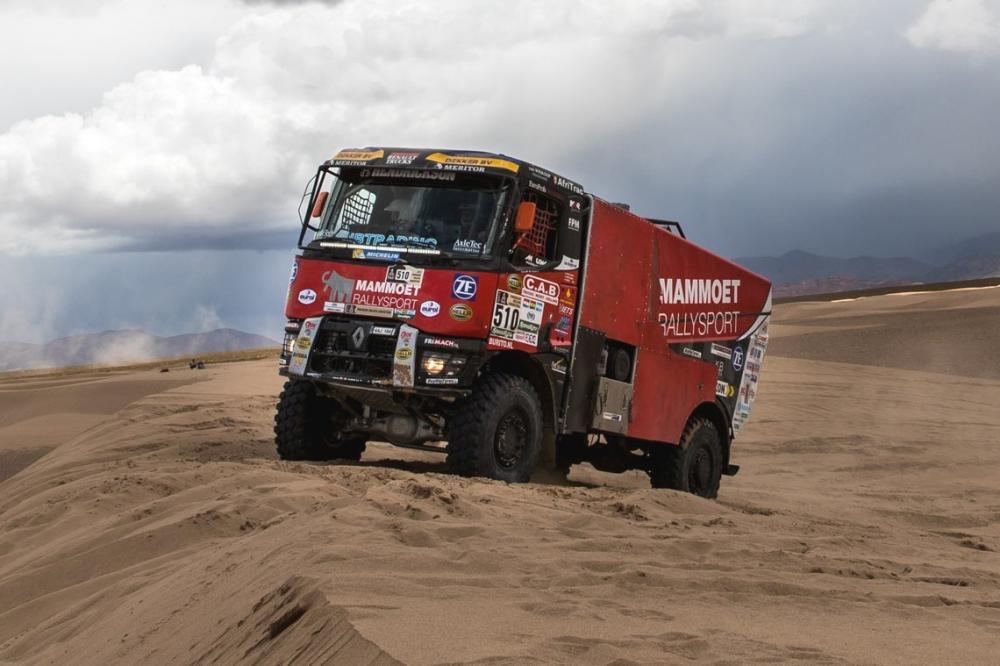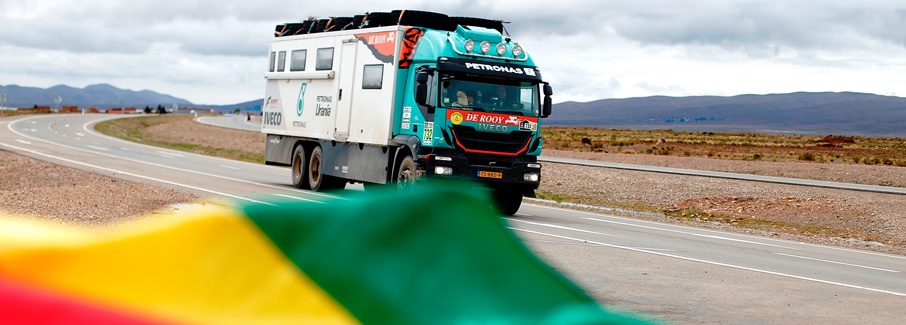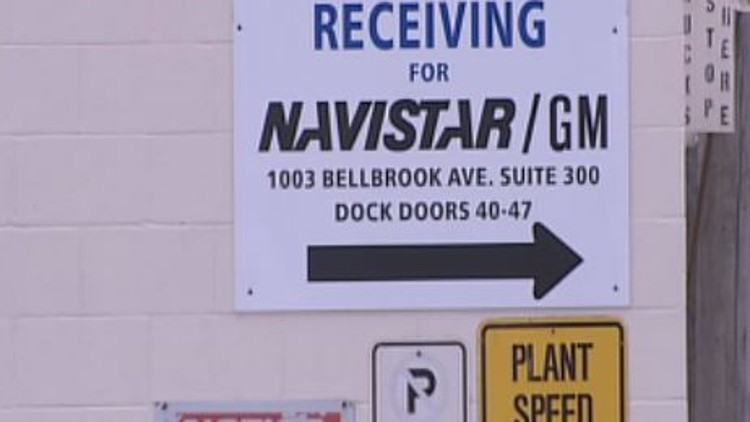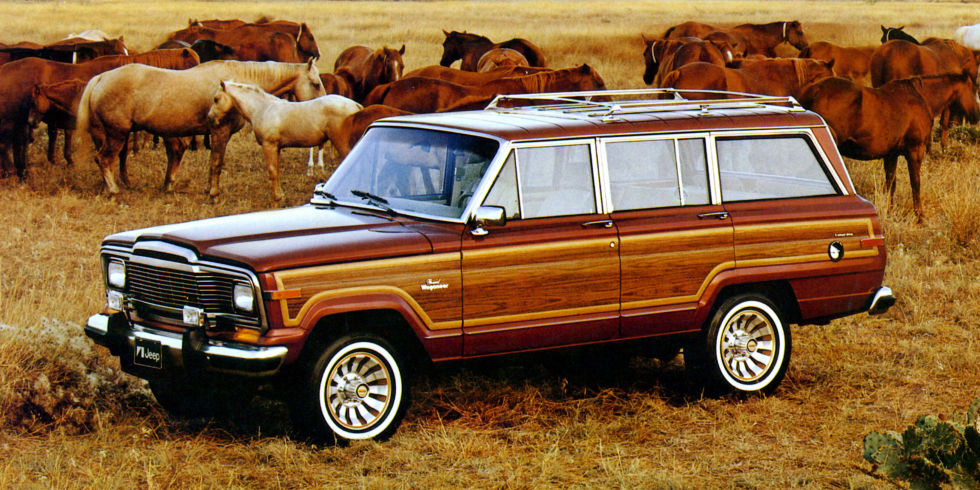
kscarbel2
Moderator-
Posts
18,930 -
Joined
-
Days Won
114
Content Type
Profiles
Forums
Gallery
Events
Blogs
BMT Wiki
Collections
Store
Everything posted by kscarbel2
-
. . . . . . .
-
. . . . . . . . . . . .
-
Renault Trucks Press Release / January 9, 2017 For the third time, the MKR Adventure team, led by Mario Kress, is tackling the extreme roads of the Dakar Rally behind the wheel of Renault trucks vehicles. After the first stages, the Renault Trucks K 520, driven by Pascal de Baar, occupies the fifth position in the overall ranking. After the sixth place clinched in 2016, MKR Adventure has once again risen to the challenge of taking part in the Dakar Rally, a competition that tests vehicles in extreme conditions. Three Renault Trucks vehicles have engaged in the race: a Renault Trucks Sherpa CBH 385 driven by Martin Van Den Brink (no. 506, Mammoet Rallysport team), a K 520 driven by Gert Huzink (no. 524, Riwald team) and a K 520 driven by Pascal de Baar (no. 510, Mammoet Rallysport team). After the first stages, the Renault Trucks K 520, driven by Pascal de Baar, occupies the fifth position in the overall ranking. As an MKR partner since 2010, Renault Trucks provides support for its off-road and rally raid activities; MKR Adventure are experts on extremely difficult terrain. During the Dakar, the vehicles are put to severe test, with sections of the race at an altitude of up to 4700 m above sea level. "At high altitude, our engine develops less torque and power. In thinner air, it is more difficult to rev up the engine," explained Mario Kress, describing the 336 km "special stage" on the border between Bolivia and Argentina. Through this partnership, the teams of Renault Trucks and MKR mutually enhance their technical and technological know-how, in particular of engines and the transmission system of trucks. .
-
Dakar 2017: IVECO in the lead as the crews take their rest day Iveco Trucks Press Release / January 9, 2017 The 2017 Dakar Rally arrived to the midpoint as the crews drove the connecting section to the camp in La Paz after Stage 6 was cancelled due to heavy rain and flooded roads. With five stages already contested, the IVECO Powerstar #500 driven by Gerard de Rooy, Moi Torrallardona and Darek Rodewald, is at the top of the standings. The PETRONAS De Rooy IVECO team leader won the last two specials after suffering three punctures in the third day of competition. Gerard de Rooy, with IVECO, leads in front of Eduard Nikolaev, Dmitry Sotnikov and Airat Mardeev with their Kamaz trucks, all of them locked within 16 minutes behind the leader. Dakar’s last champion did a solid job in South America’s hardest routes, in a competition that already crossed Paraguay, part of Bolivia and the north of Argentina. Ton van Genugten and Wuf van Ginkel will set their sights on returning to the Top 20 of the race in the second part, after losing more than four hours and an additional two-hour penalty in the last timed stage. Van Genugten, navigated by Anton van Limpt and Bernard der Kinderen in the Trakker #507, were stuck in mud, a nightmare for them and other drivers. Wuf van Ginkel, joined by Erik Kofman and Bert van Donkelaar in the Trakker #525, helped their teammates to get out from the difficult situation. This was a turning point for both crews, who were running inside the best 15 of the class. Now, they hope to have a clean second week. Federico Villagra, Adrián Yacopini and Ricardo Torlaschi, on board the IVECO #502, will aim to return to the Top 5, after falling back to sixth place in the first half of the race. With a good performance of the Powerstar and regular results, Villagra will try to repeat last year’s third place on the podium. The 2017 Dakar Rally will be travel south from this Monday onwards, when the vehicles leave La Paz to reach Uyuni after 322 timed kilometres. On Tuesday they will head back to Argentina to race in Salta, Chilecito, San Juan, Río Cuarto and Buenos Aires, going over the landmark of 2.000 kilometres in the last week of the race. Overall Classification – Dakar 2017 1. Gerard de Rooy (IVECO) 14h06m07s 2. Eduard Nikolaev (Kamaz) + 2m23s 3. Dmitry Sotnikov (Kamaz) + 6m36s 4. Airat Mardeev (Kamaz) + 16m32s 5. Pascal de Baar (Renault Trucks) + 32m25s ----------- 6. Federico Villagra (IVECO) + 34m30s 23. Ton van Genugten (IVECO) + 6h07m03s 25. Wuf van Ginkel (IVECO) + 7h04m34s .
-
Dayton Daily News / January 9, 2016 Navistar, a leading manufacturer of commercial trucks, is leasing warehouse space in Xenia, Ohio. Xenia is in southwestern Ohio, 21 miles southeast of Dayton. Details about Navistar's operations at the former Supervalu building on Bellbrook Avenue have not been disclosed. A sign on the building directs delivery drivers for the company to go to docks 40 to 47. Officials with the city of Xenia and Greene County confirmed that Navistar has applied for a certificate of occupancy. Some Xenia residents are excited at the possibility of new jobs being available. "Coming from a big city to a small town, it's encouraging to see Xenia being built up," said resident Leslie Robholz. We're working to find out more about Navistar's plans at the site. .
-
Freightliner Trucks Press Release / January 9, 2017 . . . . . . . .
-
Freightliner introduces next-generation Cascadia
kscarbel2 replied to kscarbel2's topic in Trucking News
-
Sorry then. When you mentioned a Chrysler transmission plant in Syracuse, I instinctively thought of New Process (It was renamed New Venture in 1990 when it became a Chrysler-GM joint venture).
-
https://www.cleanburn.com/ . .
-
Why is it you say what happened in 2001 is not relevant to this? Matthew Lee - Associated Press State Department correspondent "It was with a high degree of confidence that the US intelligence community said...........Iraq had WMD" .
-
Speaking of Biden, it wasn't the same. Biden wasn't mocking his friend Chuck Graham (D-Mo), where as Trump was blatantly mocking the handicapped reporter. As for influencing elections, both countries have been actively doing it for decades. And then there's orchestrated regime changes. .
-
You meant New Process Gear ?
-
FCA commits $1 billion to two U.S. plant retoolings
kscarbel2 replied to kscarbel2's topic in Odds and Ends
Automotive News / January 9, 2017 Fiat Chrysler has dramatically altered its product course and will now bring its new Jeep Grand Wagoneer back to life as a body-on-frame SUV, after nearly two years of claiming that it would be unibody like almost all other luxury nameplates. In comments to reporters at the Detroit auto show, FCA CEO Sergio Marchionne confirmed Monday that the company now plans to build both a Wagoneer and Grand Wagoneer as body-on-frame vehicles. The new SUVs will be built at a retooled Warren Truck Assembly plant in suburban Detroit, which now builds the current-generation Ram 1500. The abrupt switch in product plans is likely to mean that the automaker’s dream of a $140,000 Grand Wagoneer to compete against the Range Rover, as laid out in November by Jeep brand boss Mike Manley, won’t happen. Instead, a much less expensive luxury Jeep is likely aimed at General Motors’ profitable Chevy Tahoe family of body-on-frame SUVs. Marchionne has previously said that he coveted the profits GM generates from its large SUVs. The switch is likely good news for FCA dealers, who faced the prospect of having a very expensive vehicle in their inventory without a natural customer base in that price range. Right now, the highest-priced Jeep -- the unibody 2017 Grand Cherokee SRT -- starts at $67,890, including shipping. A body-on-frame three-row Grand Wagoneer is more likely to stay closer to the brand’s initial price estimates of $100,000 and sell in higher volumes, at least in the U.S. Jeep’s leadership has been pushing for a luxury line above the Grand Cherokee, and included plans for it in its 2014 five-year business plan. As recently as June, Manley said that “the Wagoneer name represents historically the pinnacle of premium for the Jeep world. But in the same way as you may have an Overland and a Summit, you have different trim levels, so you could imagine the use of Wagoneer to denote a really premium vehicle, and Grand Wagoneer takes it to the very next level. So if you were to use that as your naming strategy, that’s exactly how I would use the trims.” . -
What is left. What is right? What is a "lib"? The terms I use are right......and wrong. I myself expect the leader of our country to exemplify the ethics, morals and values that make our country the greatest in the world. Be it a company head or country leader, in order to achieve success, one must be a uniter of people. Because we can't move ahead unless we work together as a team. Mick Jagger was right, in that everyone can't always get what they want. But a leader of people can still win broad support while explaining in a professional manner commensurate with their position that we must strike a balance. A leader is a person that the vast majority of the country wants to rally behind (e.g. Franklin Delano Roosevelt). A leader doesn't sling muck at an actress who criticizes him. He/she instead stays focused. As president, there will always be people who disagree with you. Are you going to spend half your time on twitter ridiculing these American's freedom of expression, or rise above the noise and focus on being president? If one focuses on being a leader, and does an exemplary job, criticism will be minimal and accolades many,
-
The Washington Post / January 9, 2017 Grace Packer became a foster child at age 3. At age 14, she suffered a slow and painful death — raped, drugged and left to die in a sweltering attic. When those actions didn’t result in her death, she was strangled. Then her body was packed in cat litter and left in the same attic for months. Police would later find her dismembered remains in rural Pennsylvania. Officials say her gruesome death was carried out by a 41-year-old woman she had known as her mother, who adopted the teenager and her younger brother, and the mother’s boyfriend. Sara Packer and Jacob Sullivan were charged Sunday with several crimes, including homicide, kidnapping, endangering the welfare of a child and abuse of corpse. Sullivan who, police say, raped Grace in the attic, is facing additional sexual assault charges. Bucks County District Attorney Matthew Weintraub said the teen’s brutal killing was the result of a months-long plan — “a rape-murder fantasy” shared by her adoptive mother and her boyfriend. “Unfortunately, Grace Packer was a disposable child to these people,” Weintraub said. “Who will now speak for Grace Packer? We will.” About a week before they were arrested on Saturday, Packer and Sullivan were rushed to the hospital after they tried to kill themselves by overdosing on pills. A probable cause affidavit said the two had taken a suicide pact. The arrests and charges come after Sullivan confessed, in detail, to hospital staff about the teenager’s death. Sullivan told hospital employees and investigators that he and Packer began plotting the teen’s murder in fall 2015 and carried it out on July 8, 2016, in their house in Quakertown, Pa., a borough in Bucks County about 40 miles north of Philadelphia. Sullivan struck Grace several times in the face, splitting her lip, and then he and Packer took the teen to the attic on the third floor. There, Sullivan raped Grace while her adoptive mother watched. The 44-year-old man admitted sexually assaulting the teen on two prior occasions. At some point, Packer left to get some medicine to sedate Grace, Sullivan told investigators. The two later tied and gagged the teen and left her in a cedar closet, believing she would eventually die from the effects of the assault, the drugs and the excessive heat in the attic. At about 3 a.m. the next morning — more than 12 hours later — they checked on Grace and found that she was still alive and conscious. That’s when Sullivan strangled her to death, admitting to investigators that it was “more physical and took much longer than he expected.”. Prosecutors said the two packed the teen’s remains in cat litter to mask the odor. For the next three months, Grace’s body would remain in the attic. Packer is also accused of lying to police about her daughter’s whereabouts. A few days after the teen was believed to have been killed, on July 11, Packer told police that Grace had stolen $300 from her and had run away from home. She claimed that they had a fight the night of July 8 because she didn’t allow the teen to go to a friend’s house. Grace was gone when she checked on her the following morning, Packer told police, adding that her daughter has been gone for “days at a time” before. But investigators found inconsistencies in Packer’s statements. For instance, in September, Packer told a detective investigating the missing persons report that she had notified relatives about her daughter’s disappearance. But a North Carolina relative, who was Grace’s caretaker when she stayed there in 2015, said she didn’t know the teen was missing. Other family members told investigators that they weren’t told about Grace’s disappearance until later. Investigators also noticed oddities in Packer’s behavior. In the months after Packer filed a missing person’s report, detectives were largely unable to get a hold of her. A frequent Facebook user with a habit of posting about insignificant incidents, such as having a headache, Packer never once posted anything about her daughter’s disappearance. After detectives visited the Quakertown home in mid-October for a follow-up investigation, Packer and Sullivan became concerned that investigators would discover Grace’s body, which was still in the attic. They dismembered the teen and drove to a remote area where they dumped the remains. Later that month, Pennsylvania State Police troopers responded to a call about human remains found in rural Bear Creek Township in Luzerne County, about 70 miles from the couple’s home. After searching the house, detectives found a receipt for a bow saw and two blades believed to have been used to dismember Grace’s body. A surveillance video showed Packer buying the items at a local tractor supply store. Records of Packer’s debit card purchases also revealed that she had bought Diphenhydramine tablets and Tylenol capsules at a local Target store on July 8, the same day that Grace was believed to have been raped and drugged. On Dec. 30, authorities said, Packer and Sullivan tried to commit suicide by overdosing on pills. Police said they believed that the two had agreed to kill themselves. At that time, they had moved to an apartment in a neighboring town. A woman who had been living with the couple called 911. “I don’t know if you have watched the news lately … our … someone we were involved with was recently … It’s a big mess, it’s a big mess, and I don’t really know how to explain it…but…oh my God,” Katherine Albright told the dispatcher. Police also said they found a suicide note in which Sullivan appears to try to explain his innocence to his children. It read: “I love you all so much. You are the only people that I have always been able to count on. I’m sorry that I am taking the coward’s way out, but I don’t have any strength left in me. People want to judge and lie and break me down. They have. I can’t exist with Sara in jail and those f—— lying pigs and the whore media have made it impossible for us to live. They don’t care how many lives or laws they break. I know you will always know that we had nothing to do with this no mater what lies they tell. I’m sorry to leave you. Remember all I’ve taught you. Be brave, stand tall and do your best to be stronger than I was.” But about a week later, investigators were told that Sullivan had confessed to hospital staff and to his family that he had killed Grace and that Packer was his accomplice. Sullivan was arrested on Saturday, and Packer was arrested about three hours later. The two were arraigned separately on Sunday. A district judge denied them bail. “I’m sorry for what I did,” Sullivan told reporters as he was led into the courthouse. Weintraub, the district attorney, called the crimes “heinous” and “depraved.” After Packer’s arraignment, Weintraub said the teen’s death “shakes one’s belief in the goodness of humanity.” “The question is: How could any mother do this to a child?” he told the paper. “I’m bereft. I don’t have an answer.” Grace’s 12-year-old biological brother is with other family members. Packer and Sullivan are scheduled for a preliminary hearing on January 20. .
-
Ford to Cancel Mexican Plant - Invest $700mm in Michigan Plant
kscarbel2 replied to General Ike's topic in Odds and Ends
Trump tariffs threaten Fiat Chrysler’s Mexico plants The Financial Times / January 9, 2017 Marchionne warns of possible closures after announcing $1bn US investment Fiat Chrysler Automobile (FCA) would have to close its Mexican car plants if Donald Trump follows through on campaign promises to impose stringent tariffs on vehicles coming into the US, chief executive Sergio Marchionne said on Monday. “It’s possible that if economic tariffs are imposed . . . and are sufficiently large, it will make production of anything in Mexico uneconomical and we would have to withdraw,” Mr Marchionne said at the annual Detroit auto show. “It’s quite possible.” His comments came only hours after his company drew an approving tweet from the US president-elect by announcing a fresh $1bn investment into the US, creating 2,000 jobs. “Fiat Chrysler just announced plans to invest $1BILLION in Michigan and Ohio plants, adding 2000 jobs. This after Ford said last week that it will expand in Michigan and U.S. instead of building a BILLION dollar plant in Mexico. Thank you Ford & Fiat C!” Mr Trump wrote. Fiat’s two separate comments reflect the difficult line that carmakers are having to walk when dealing with the incoming US president, who has repeatedly criticised companies that manufacture cars for the US market in Mexico and threatened to impose 35 per cent tariffs on imported cars. Fiat Chrysler produces 503,000 vehicles in Mexico a year at two sites in Saltillo and Toluca and exported 86 percent of them to the US or Canada in 2015. Between 21 percent and 52 percent of parts used in FCA’s Mexican vehicles come from US suppliers, so a decision to shutter plants there could hit them as well. Marchionne said FCA was waiting to see what Trump and the Republican Congress would do before making decisions about its Mexican presence. “We want clarity, we all want clarity,” he said. “If they get changed, we have no choice.” He also insisted that the new US investment did not involve jobs that would otherwise have gone to Mexico. “This wasn’t a pre-emptive strike,” he said. The FCA group, which also includes the Jeep, Ram, Dodge, Alfa Romeo and Maserati brands, makes 1.8 million cars a year in the US. Mexico’s car industry has blossomed under the North American Free Trade Agreement, with the industry making 3.4 million cars a year but it is heavily reliant on access to the US and Canadian markets, which account for 82 percent of the country’s 2.7 million exported vehicles. “The reality is the Mexican auto industry has been tooled up to try and deal with the US market,” Marchionne said. “If the US market were not to be there, then the reasons for its existence are on the line.” Some carmakers, such as Nissan and Volkswagen, use Mexico as a base to export to Europe or Latin America. But Marchionne said it would be too expensive to repurpose FCA’s existing Mexican site to export all over the world. “That transition would be costly and it would be very, very uncertain. There is no easy transition; those plants were designed built and purposed at a time when NAFTA was alive and well,” he said. -
VW top management ‘authorized concealment’ of emissions cheating The Financial Times / January 10, 2017 Executives briefed about defeat devices in July 2015, say unsealed criminal charges Volkswagen’s senior management was briefed in the summer of 2015 on the cheating software at the centre of the company’s diesel emissions scandal, and ordered its continued concealment, according to criminal charges unsealed by US prosecutors on Monday. VW employees briefed “executive management” in July 2015 at the German carmaker’s headquarters in Wolfsburg, Germany, about the use of software-based defeat devices to understate emissions in official tests, says a criminal complaint about the company’s former head of compliance in the US. “Rather than advocate for disclosure of the defeat device to US regulators, VW executive management authorised its continued concealment,” adds the complaint. The VW employees involved in the briefing included Oliver Schmidt, a VW veteran who was head of compliance in the US in 2012 and 2015. He was temporarily detained pending a detention hearing scheduled for Thursday in Miami, where he is due to be arraigned on Monday. The conduct outlined in the criminal complaint raises the likelihood that some more senior VW executives in Germany and the US could face charges, said one Department of Justice official. It comes at a time when VW is seeking to finalise a criminal settlement with the US authorities over the emissions scandal. Such a deal would be a milestone in VW’s efforts to draw a line under the affair, which has become the worst crisis in the company’s history. Schmidt is accused of conspiring for nearly a decade to conceal from US regulators the existence of defeat devices in VW diesel cars, according to the criminal complaint filed in federal court in Detroit. He is also accused of defrauding the US by impairing the Environmental Protection Agency’s emissions control program, cheating VW customers, and violating the Clean Air Act. For several weeks before VW admitted to US regulators in September 2015 that its diesel cars had cheated emissions tests, employees worried about the danger of criminal penalties for their actions, says the criminal complaint. VW’s “executive management” in Wolfsburg requested a briefing on the US situation, which took place on July 27 2015, says the criminal complaint. For that briefing, Schmidt and several colleagues prepared a slide on the potential outcomes of a meeting with California regulators scheduled for the following week. A “positive” meeting would result in the needed certification to sell VW cars in the US. But a “negative” outcome raised the question “Indictment?”, according to the criminal complaint. Schmidt’s arrest by the FBI marks the latest development in a scandal dating back more than a decade. In 2006, VW engineers realized that a new diesel engine they had designed would not be powerful enough to satisfy car owners and not green enough to pass muster with regulators. The new engine was the centerpiece of an ambitious strategy to boost VW sales in the US market. Rather than admit defeat, the company wrote software called a defeat device to cheat emissions tests. The device was programmed to recognize when a diesel car was undergoing the government’s standard laboratory tests and operate in accordance with EPA limits. But when driven on the road, the software allowed the cars to spew up to 40 times the allowable levels of nitrogen oxide. “VW employees knew that if they had told the truth and disclosed the existence of the defeat device, VW could not have sold any of its diesel vehicles in the United States,” says the criminal complaint. VW’s scheme began unravelling in early 2014 when a study ordered by the International Council on Clean Transportation, a non-profit organisation, detected the higher readings on the road emissions by VW diesel cars. In April 2014, after learning of the study’s findings, Schmidt emailed a colleague about the issue: “It should first be decided whether we are honest. If we are not honest, everything stays as it is.” VW formed an ad hoc engineering task force to handle regulators’ questions. “VW employees determined not to disclose to US regulators that the tested vehicle models operated with a defeat device,” says the criminal complaint. “Instead, VW employees pursued a strategy of concealing the defeat device in responding to questions from US regulators, while appearing to co-operate.” By the summer of 2015, Schmidt was directly involved in efforts to deal with regulators’ increasingly pointed questions. James Robert Liang, a VW engineer, in September became the first person to plead guilty to criminal charges, including conspiring to defraud US customers and regulators. He agreed to cooperate with US government investigators in return for leniency. Prosecutors also are getting help from two other VW insiders, who worked in the company’s engine development department, says the criminal complaint. They are cooperating in return for assurances that they will not be prosecuted in the US. From 2012 to 2015, Schmidt was general manager of VW’s environmental engineering office in Michigan, which was responsible for dealing with US regulatory agencies such as the EPA and the California Air Resources Board. In March 2015, he was promoted to the post of principal deputy to the head of engine development in Wolfsburg.
-
Retired Republican Congressman Ron Paul, formerly the U.S. Representative for Texas' 14th and 22nd congressional districts. .
-
Ford to Cancel Mexican Plant - Invest $700mm in Michigan Plant
kscarbel2 replied to General Ike's topic in Odds and Ends
Auto executives, with eye on Trump, highlight U.S. investments Reuters / January 9, 2017 Global auto executives at the Detroit auto show are highlighting their investments in the United States, mindful of President-elect Donald Trump's attacks on automakers for building vehicles in Mexico. Fiat Chrysler Automobiles CEO Sergio Marchionne said on Monday that uncertainty over Trump's trade and tax policies could lead automakers to delay investments in Mexico, and he confirmed plans to create 2,000 jobs at Fiat Chrysler's U.S. factories. "The reality is the Mexican automotive industry has now for a number of years been tooled-up to try and deal with the U.S. market. If the U.S. market were not to be there, the reasons for its existence are on the line," said Marchionne. FCA announced on Sunday it would spend $1 billion to retool factories in Ohio and Michigan to build new Jeep sport utility vehicles, as well as a pickup truck, and potentially move production of a Ram heavy-duty pickup truck to Michigan from Mexico. On Monday, Ford confirmed it would build a new Ranger pickup and a new SUV under the storied Bronco name in Wayne, Michigan (replacing Focus/C-Max production that is shifting to Hermosillo, Mexico). During the 2016 presidential campaign, Trump criticized Ford's announcement last year that it would move Focus production to Mexico. Last week, Ford scrapped plans to build a new $1.6-billion Focus plant in San Luis Potosi, Mexico, and said it would invest $700 million at its Flat Rock plant in Michigan. Executives at Ford, Fiat Chrysler and other automakers at the auto show all claimed their investment decisions were driven by business considerations, not Trump's comments. Most major automakers in the U.S. market have substantial vehicle-making operations in Mexico, as well as complex networks of parts makers that supply their factories in the United States and support jobs and investment in states such as Ohio and Michigan. Trump praised Ford and Fiat Chrysler's latest announcements on his Twitter account on Monday. "It's finally happening - Fiat Chrysler just announced plans to invest $1BILLION in Michigan and Ohio plants, adding 2000 jobs," Trump said. He added: "Ford said last week that it will expand in Michigan and U.S. instead of building a BILLION dollar plant in Mexico. Thank you Ford & Fiat Chrysler." INVESTING IN THE UNITED STATES Trump's focus on U.S. automotive jobs, and uncertainty over what policies he may introduce, have been central topics of discussions among industry officials at the annual auto show. Companies ranging from General Motors to Honda to Daimler used the show to highlight new U.S. investments. Toyota will invest $10 billion in the United States over the next five years, the same as in the previous five years, North America Chief Executive Jim Lentz said Monday. Honda will build a new hybrid model that does not have a gasoline counterpart in its lineup. The hybrid will be made in the United States in 2018 at an existing plant, and Honda said it would boost investment at its transmission plant in Georgia. Daimler CEO Dieter Zetsche said Sunday the German automaker planned to invest another $1.3 billion to expand SUV production at its Alabama plant. Volkswagen plans to invest $7 billion in the United States between 2015 and 2019. It is weighing whether to build an electric SUV in the United States or Mexico, said North America Region CEO Hinrich Woebcken on Sunday. Volkswagen has had a plant in Mexico for 50 years and it is not shifting any jobs to Mexico from the United States. "We do not make our investment decisions based on administrative cycles," Woebcken said. FCA's Marchionne said Monday his company's decision to invest in expanded truck production in the United States "was in the works and has been in the works for a long period of time." Marchionne wanted to get out the news about adding jobs and investment in the United States in case the company encountered more criticism from Trump. Marchionne said he has not made a decision on whether to move production of certain Ram heavy-duty pickups from Mexico to the United States, in part because of uncertainty about tariffs. "There's no commitment to move the heavy-duty. If tomorrow morning President-elect Trump decides to impose a border tax on anything that comes up from Mexico, then we’ll have to adjust." Also on Monday, Toyota's Lentz warned that a "border adjustability tax," could add $1,000 to the cost of a Kentucky-built Camry sedan, because it has foreign-made parts. Ford Chairman Bill Ford Jr and General Motors CEO Mary Barra have, separately, spoken with Trump in recent days. Ford said he has been "in relatively frequent contact with him." He said he was encouraged that overhauling the corporate tax code was high on Trump's agenda. Barra on Sunday said tax reform and "streamlining regulations ... are just two areas that would be extremely beneficial" for Trump to address. Trump has criticized GM for building cars in Mexico while laying off workers in the United States. Barra, who is on an advisory committee to Trump, said decisions about where to build specific vehicles are made "two, three four years ago." Overall, she said of Trump, "we have much more in common" than areas of disagreement. Marchionne said he had not spoken with Trump or anyone on the presidential transition team. -
Ford to Cancel Mexican Plant - Invest $700mm in Michigan Plant
kscarbel2 replied to General Ike's topic in Odds and Ends
Bill Ford: Scrapping Mexico Plant Is a Business Decision Bloomberg / January 10, 2017 Ford Chairman Bill Ford discusses the Detroit auto industry, Donald Trump’s trade policies, the president-elect’s nomination of Elaine Chao for Transportation secretary and the company’s decision to scrap plans for a new plant in Mexico. He speaks with David Westin on “Bloomberg Markets” from the North American International Auto Show in Detroit, Michigan. Video - https://www.bloomberg.com/news/videos/2017-01-09/bill-ford-scrapping-mexico-plant-is-a-business-decision -
This video gives me the impression that Trump indeed imitated the handicapped Pulitzer Prize-winning reporter (Serge F. Kovaleski), who suffers from arthrogryposis (https://en.wikipedia.org/wiki/Arthrogryposis). That Mr. Trump would deny the event is troubling, and his action beneath the dignity of the presidency. Leading the world's greatest country, I myself do hold our presidents to a higher standard. Trump's action was not indicative of the mature behavior reasonably expected from a presidential hopeful.
-
Ranger & Bronco return confirmed, and a mid size van?
kscarbel2 replied to TeamsterGrrrl's topic in Trucking News
If the Bronco is merely a rebadged Ford Everest, I'll be first in line. However, if it is a Bronco-like body on the global Ranger platform, I'll likely pass. "Bronco" is a signature Ford product that the automaker indeed should bring back. But the Bronco and Everest are two different flavors. -
Ranger & Bronco return confirmed, and a mid size van?
kscarbel2 replied to TeamsterGrrrl's topic in Trucking News
A mid-sized van means the Transit Custom (windowless cargo version) and Transit Tourneo (passenger version) are finally coming to the US market. I mentioned this superb product here................http://www.bigmacktrucks.com/topic/47453-new-man-tge-and-volkswagen-crafter-launched-at-iaa-2016/#comment-350078 New for 2012, the mid-sized Transit is produced by Ford Otosan in Turkey. There are actually four size vans in the Transit range, the smallest being the Transit Courier...........http://www.ford.co.uk/CommercialVehicles/Transit-Courier -
Titan to be Discontinued
kscarbel2 replied to Mackpro's topic in Modern Mack Truck General Discussion
I have an idea what's going on with the D16. At any rate, this is what Volvo announced within the last 12 months. Production of upgraded D11 and D16 engines begins in January, while a D13 with turbo compounding begins production in mid-2017. http://www.bigmacktrucks.com/topic/45838-volvo-trucks-north-america-press-conference-shippensburg-pa/#comment-337812 The 2017 Mack MP8 will be available for order in April 2016, while the 2017 MP7 and MP10* engines will be available for order in July 2016. The Mack MP8 with turbo compounding will be available for order in October 2016. http://www.bigmacktrucks.com/topic/44945-new-mack-engines/#comment-331766 Long noted that no major changes are being made to the 2017 D16 model compared its previous 2014 iteration, with the D16 maintaining its iron-zeolite catalyst, eliminating the need for sulfur regeneration. Production for the tweaked 2017 D16 model begins in January 2017. http://www.bigmacktrucks.com/topic/44540-volvo-trucks-announces-us-market-common-rail-other-powertrain-enhancements/#comment-328779
BigMackTrucks.com
BigMackTrucks.com is a support forum for antique, classic and modern Mack Trucks! The forum is owned and maintained by Watt's Truck Center, Inc. an independent, full service Mack dealer. The forums are not affiliated with Mack Trucks, Inc.
Our Vendors and Advertisers
Thank you for your support!










